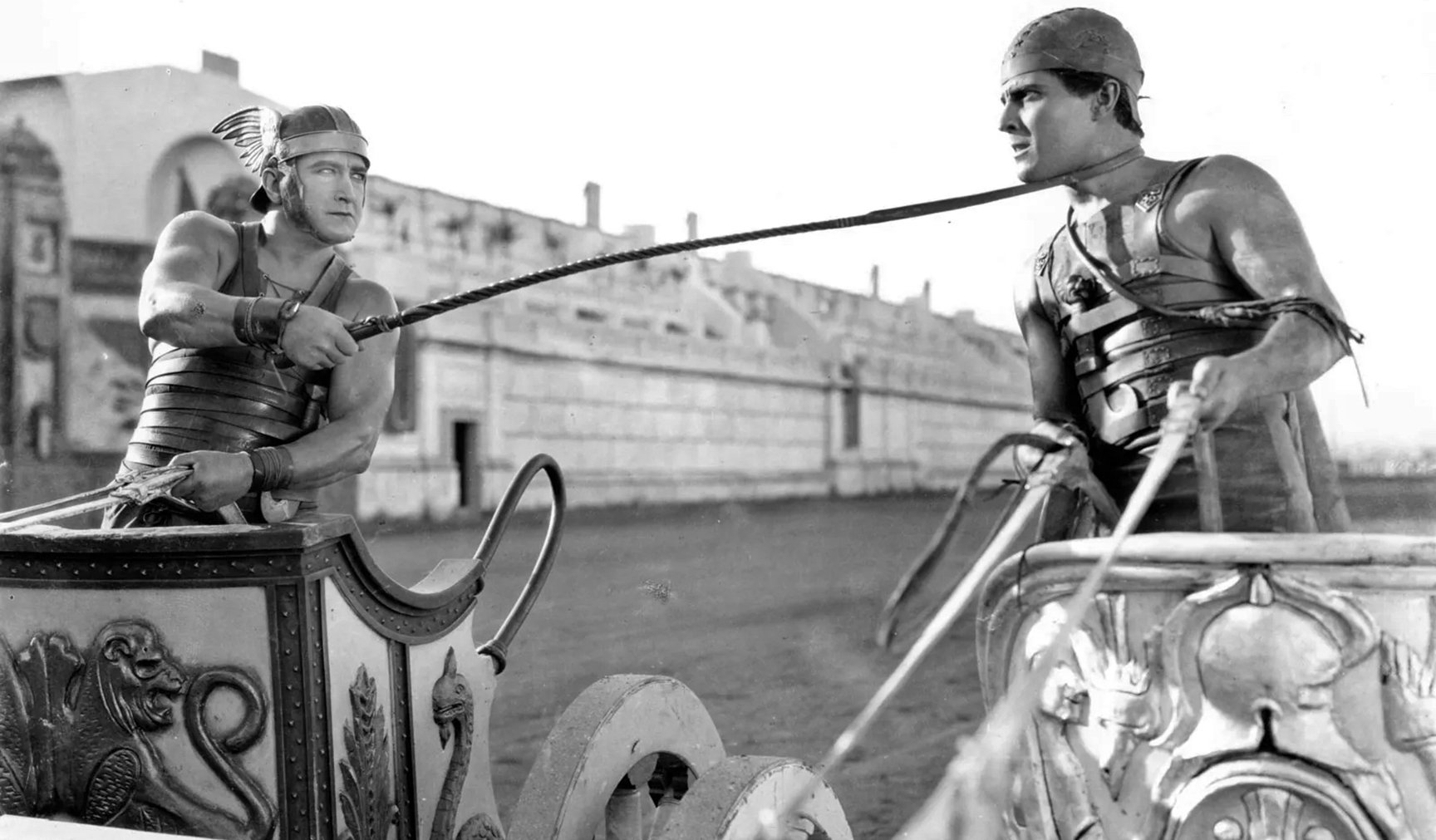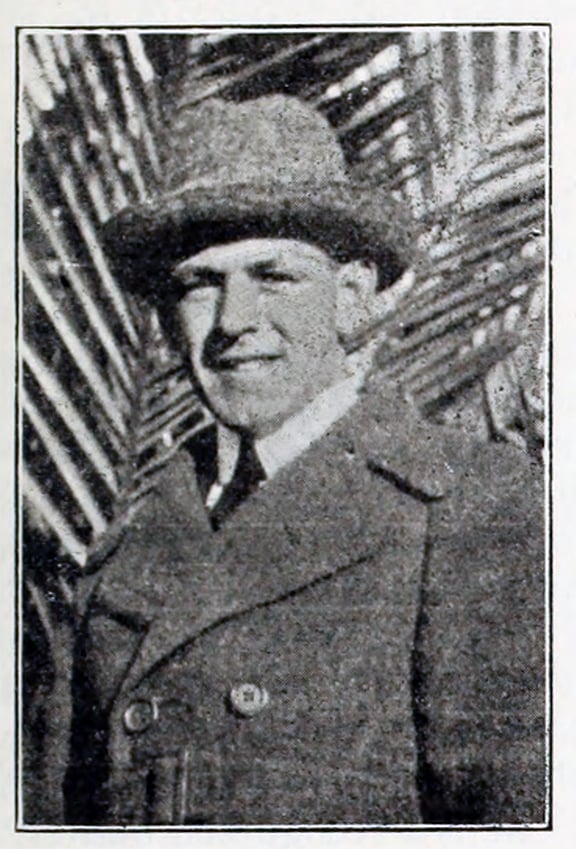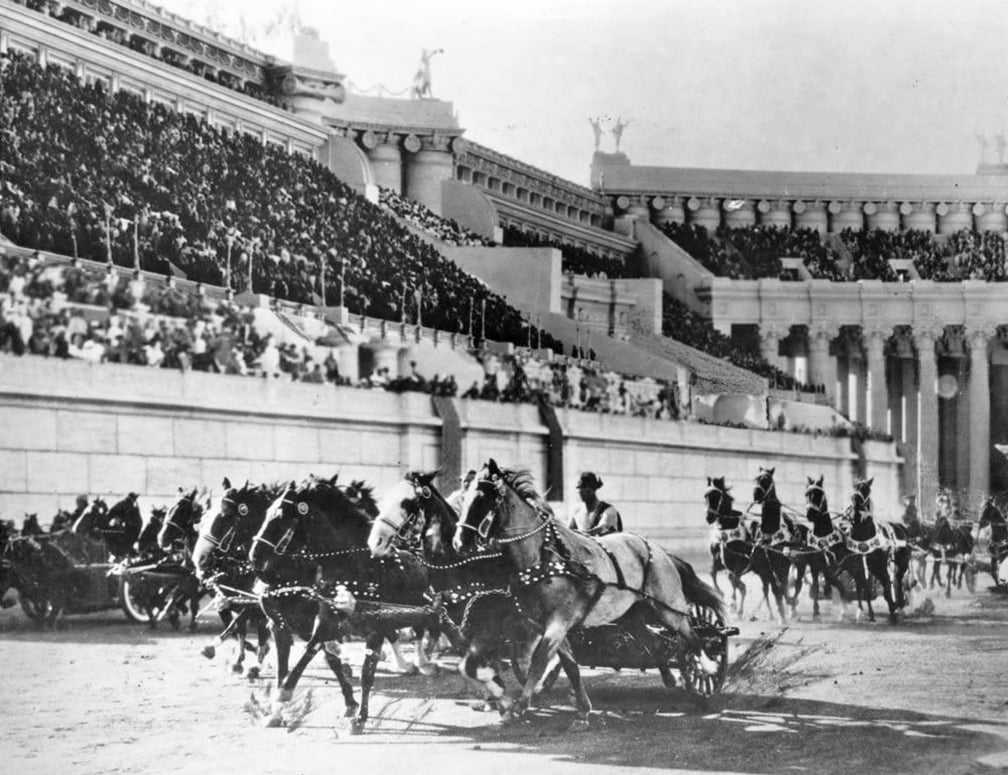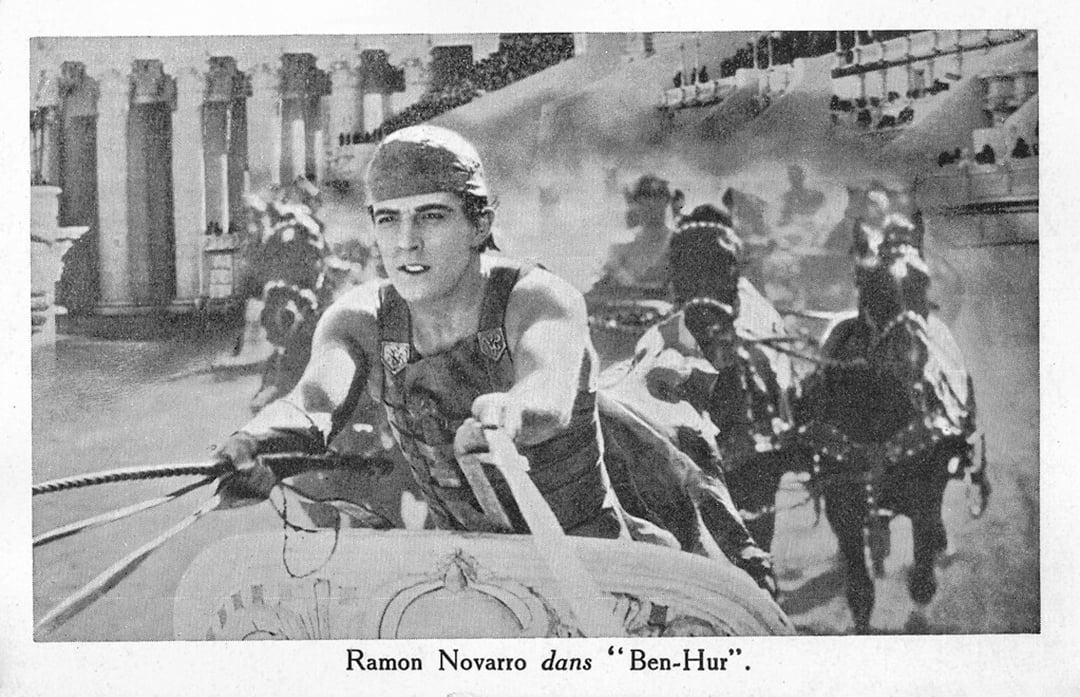
Filming Ben-Hur Chariot Race Scenes
Remarkable results registered by ASC members on “Circus Maximus.”
This article was originally published in AC Jan. 1926. Some images are additional or alternate.
By George Meehan, ASC

A new world record in the number of cinematographers employed in the “shooting” of motion picture action was established in the filming of the chariot race scenes in the Metro-Goldwyn-Mayer version of Ben-Hur. Forty-two cameras, each directed by an expert cinematographer, “covered” every angle of the Circus Maximus act and, according to officials of MGM, it is going down in film history as one of the most thrilling race pictures ever recorded for the silver sheet.
Results Praised
Metro-Goldwyn-Mayer officials, including E. J. Mannix, comptroller; Joe Cohn, production manager, and John M. Nickolaus, laboratory chief with that organization, are loud in their praises for the skill of the cinematographers who captured all the desired results without necessitating the lapping over into another day which would have meant an added expense of thousands of dollars for the hundreds of people who were used in the scene.

The former record for cinematographers used at one time in the filming of a motion picture stood at 17, it is said, but in order to capture every detail of the great Ben-Hur chariot races, in which Ramon Novarro and Francis X. Bushman were the principals, 42 cinematographers were stationed about the mammoth amphitheater at every conceivable angle and in such a manner that every beat of the horses’ hoofs, the flexing of muscles, the careening chariots, the tense expressions of the spectators as the race came to its thrilling climax were registered.

Well-Laid Plans
The arrangements for the filming of the Circus Maximus act were made by Percy Hilburn, ASC and the writer. Weeks of detail work preceded the actual filming of the scenes, but so well had the preliminaries been taken care of in anticipation of the great event that it was carried to the climax with a precision that drew unstinted praise and commendation from Louis B. Mayer, vice-president in charge of production, Fred Niblo, the director, as well as the stars of the classic.
ASC Members
In addition to the writer, among the other members of the American Society of Cinematographers taking prominent parts in the filming of Ben-Hur race scenes were H. Lyman Broening, Max Du Pont, Frank Good and E. Burton Steene. Mr. Hilburn was in charge of the cinematographic brigade on the first day of the shooting but thereafter the writer was in charge of the remainder of the work which was specially directed by Reeves (Breezy) Eason.

The work of E. Burton Steene, veteran cinematographer and expert with the Akeley camera, alone is said to have saved the MGM. company many thousands of dollars. Steene, left to his own devices on a parallel 120’ in the air, got the crux of the entire race with unbelievable clearness — namely, the crash of the chariots of Bushman and Novarro. Exercising to the utmost the facility of the Akeley camera, of which he is a recognized master, the ASC member kept the careening chariots of the two principals both in the picture, with the result that every detail of the impact shows in the finished picture. By the use of a 17-inch lens, Steene fills the entire screen with the crash. That this shot, which it is believed will become historic, could not be duplicated in a hundred fold of efforts is the opinion of the cinematographic experts who have viewed its exhibition.

All Details Captured
Regardless of what Bushman and Novarro were doing in the wild ride around the track, they were always covered by the “eyes” of a dozen cameras. Automobiles made especially for the occasion were so built that ample room was provided for a veritable battery of cinematographers and these machines kept pace with the principals as they whirled the track, thereby enabling the cinematographers to register every detail of the struggling horses and men as they fought for victory.
This silent epic, running 141 minutes and based on the 1880 novel by General Lew Wallace, was released on Dec. 30, 1925, with the full title Ben-Hur: A Tale of the Christ.
In 1997, it was selected for preservation in the United States National Film Registry by the Library of Congress as being “culturally, historically, or aesthetically significant.”
A lavish remake of Ben-Hur was photographed by Robert Surtees, ASC in 1959 for director William Wyler.
If you enjoy archival and retrospective articles on classic and influential films, you'll find more AC historical coverage here.






